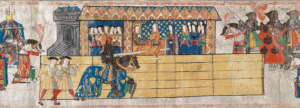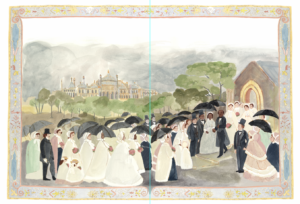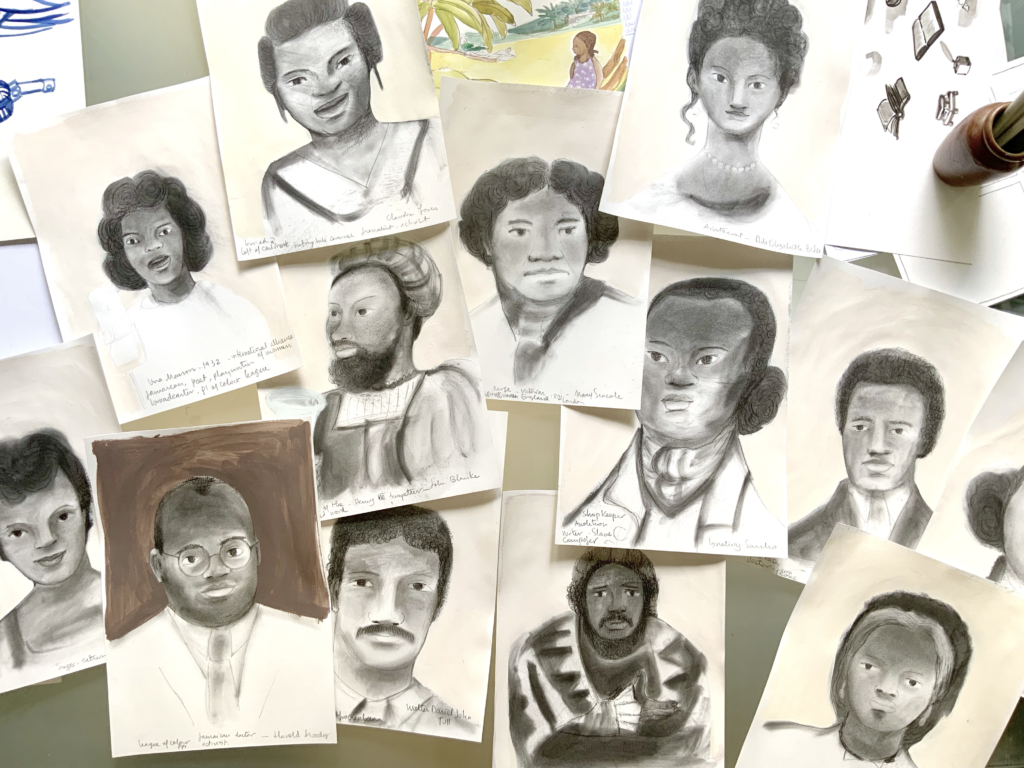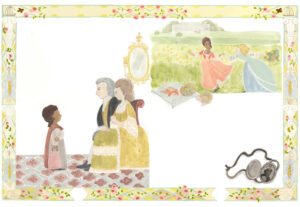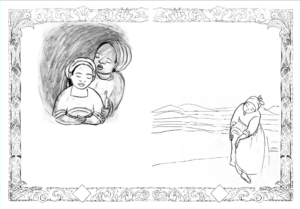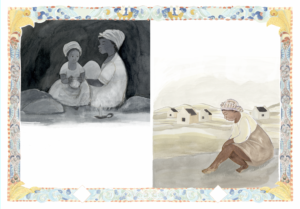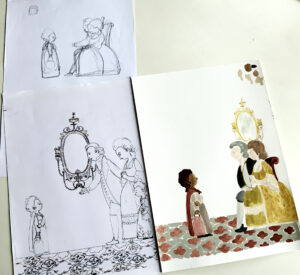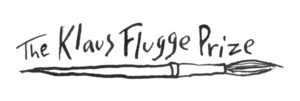

Bright Stars of Black History, illustrated by Angela Vives, written by JT Williams
Bright Stars of Black British History illustrated by Angela Vives, written by JT Williams, is one of the six books on the shortlist for the 2024 Klaus Flugge Prize.
This book takes us through Black British History from the Romans onwards via fascinating biographies of individual ‘stars’ including Ignatius Sancho, composer Samuel Coleridge-Taylor and campaigner Claudia Jones. The Klaus Flugge Prize judges find Angela Vives’ illustrations delicate but bold and admire her skill at creating scenes and characters.
Angela, Bright Stars of Black British History is a beautiful celebration of influential figures. Can you talk about what inspired you to illustrate this book and how you approached representing these historical figures? Were there any stories that particularly inspired you?
I have always looked at the stories of others for inspiration. They didn't have to be famous or exemplary; my grandmother's story, for instance, has greatly inspired me to live my life. That may be why, when I was accepted into the MA programme in children's book illustration at Anglia Ruskin, I felt a strong desire to research and create books about the lives of others.
Back in 2019, JT Williams introduced me to the remarkable story of Ignatius Sancho. His journey of struggle, survival, and success was profoundly inspiring. Creating a picture book biography of Sancho became the seed from which Bright Stars of Black British History grew. Several stories from the book impacted me, but Ignatius Sancho's life stood out the most. His story was the catalyst for pitching the idea and resonated with me on a personal level. Sancho's journey from Africa to South America, touching the Caribbean coast of Colombia, where I come from, made his story especially poignant.
I felt a great responsibility to represent these historical figures, so I relied heavily on guidance from my writer and the editorial team at T&H. It was crucial to accurately depict the figures while ensuring that the illustrations resonated with children on an emotional level. I aimed to find a balance between historical fidelity and storytelling that could touch young readers' hearts, making the stories informative and inspiring.
For some of the historical figures in Bright Stars, their surviving artwork was among the few references available. For example, John Blanke is depicted in the Westminster Scrolls. Portraits by artists such as Thomas Gainsborough and David Martin - who painted Ignatius Sancho and Dido Elizabeth Belle, respectively - are the only known images of these individuals. I also made it a point to visit London sites where significant events occurred and study the periods through the eyes of other artists. This included the William Hogarth exhibition at Tate Britain, the Dulwich Picture Gallery, where I saw the recently acquired Canaletto paintings and many visits to the National and Portrait galleries. These experiences deeply enriched my understanding of British history and the art of portraiture.
You have an interesting background in design (not design, but fine arts!) and video editing before transitioning to children's book illustration. Can you share a bit about this journey and what initially drew you to the field of children's illustration? Who have been some of your biggest influences along the way?
How long do you have?! 😉 My journey began with a BA in Fine Arts, working as an artist and art teacher in my native Colombia before moving to England. One of my teaching jobs involved creating manuals for children's activities, marking my first encounter with making art for books. When I relocated to England, I lacked connections in the art world and so I decided to further my education. I enrolled in a hand-drawn animation class at St Martins School of Art. This led to winning a scholarship and a work placement at FourCorners and VET, a post-production house in East London. I became a creative video editor for the advertising industry, a role I embraced for over 15 years. I immensely enjoyed it, and it helped me settle in my new home.
When both my parents passed away, a desire to change my life grew strongly. To return to my roots in drawing and storytelling, a passion my parents always nurtured in me. So, I left my corporate job and returned to the drawing board! My transition from video editing to children's book illustration felt like a full-circle moment.
Some of my biggest influences have been artists who explore the intersection of storytelling and visual art. Encountering the work of South African artist William Kentridge was a truly transformative experience for me. Kentridge's multidisciplinary approach - blending drawing, animation, film, sculpture, and performance - gave me the permission to diversify my career. His work inspired me to look for inspiration in human stories and peoples' journeys, as his work is an exploration of memory, history, and politics. He is profoundly engaged with the complexities of human existence. I also deeply admire his ability to master diverse art forms.
I take inspiration from everywhere! But among those are folk art, the Fauves and the work of my illustrator's heroes: Anno Mitsumasa, Ivo Bilibin, Ilona Karasz, Adrienne Ségur and Lisbeth Zwerger. Their ability to create complex, soft and evocative worlds through illustration continues to inspire my artistic journey.
Your illustrations in Bright Stars of Black British History have a gentle, distinctive style that brings the stories to life. The use of intricate borders, tone, and colour adds depth and vibrancy to your work: I loved these elements. Can you discuss any particular techniques or mediums you prefer to use, especially in relation to these elements and, perhaps, share a favourite page?
Gouache paintings and pigments mixed with a gouache binder are part of my process. For instance, an earthy brown pigment collected in Rotherhithe, South London, and a bright yellow from near Hampstead Heath were used to create a distinct Bright Stars colour palette. Page layouts, colour correction, and details like facial features are worked digitally. I think there's an unmatched satisfaction in working with traditional materials; the reason why visible brushstrokes are intentionally left in the illustrations to convey a sense of uniqueness and a human touch. Although drawn to a muted colour palette, I love using primary colours to add vibrancy and depth.
I particularly enjoy creating patterns and decorative elements, and early on, I suggested using frames for the portraits and borders for the stories. Decorative framing is used in fairy tales and classic picture books, adding significance and a sense of grandeur to the text within. This approach felt especially fitting for a book celebrating extraordinary individuals. Some symbols incorporated into the borders carry meaningful connections to the person and the society they lived in, enriching the narrative.
Some of my favourite illustrations are the double-page spreads. Though they were always a challenge, they provided the perfect space to let my imagination run free within historical references. The challenge of creating these spreads was always rewarding, as it allowed me to seamlessly incorporate decorative elements, architecture, interior, and fashion design to enrich the storytelling.
Illustrating historical figures must require a lot of research; especially those who have been marginalised. Can you talk us through your research process for this book and any interesting discoveries you made along the way?
I was unfamiliar with many of the stories of the individuals featured in Bright Stars, so my research process involved diving deep into over four centuries of British history. This required extensive visual research, which was both daunting and exhilarating, especially given the lack of visual documentation in much of Black British history. However, I was fortunate to have the guidance and support of JT Williams and a dedicated team of editors and designers at Thames and Hudson, who were invaluable throughout this journey. Their commitment to the project was truly remarkable, and it was a privilege to collaborate with such a talented group.
There were countless fascinating discoveries along the way that truly captured my imagination. For instance, I learned Sarah Forbes Bonetta's name was Omoba Aina. This detail resonated deeply with me as someone who has experienced the challenges of having a foreign name. I was also surprised that the first Notting Hill Carnival occurred indoors. Another memorable discovery was that Ira Aldridge received a standing ovation in Russia for playing Othello. But the most exciting discovery was when I learned that JT Williams is directly related to Evelyn Dove!
These moments, and many others, not only surprised me but also enriched my understanding of the colourful, tenacious and extraordinary lives of the Black British communities in Britain.
Can you tell us more about your collaboration with J.T. Williams, the writer of the book? Can you describe how you worked together (or with the editor and designer) to bring the stories to life?
When JT Williams and I first sat down in 2019 to create the story of Ignatius Sancho, we spent countless hours discussing not only Sancho's life but also biographies and the profound impact stories can have on children. These conversations laid a strong foundation for our collaboration on Bright Stars. While JT was writing the book and I was working on the illustrations we did not meet. I received each chapter's editorial notes, picture references and page layouts as commissions. My collaboration was particularly close with the designer, Kate Haynes, who played a crucial role in shaping the book. I would move on to colour and final illustrations once my sketches were approved - sometimes after a few rounds of editorial changes and revisions. Fortunately, fewer changes were needed at the final stage, allowing the final illustrations to come together smoothly.
The cover, endpapers, contents page and other peritextual elements play a crucial role in the storytelling and setting the mood. How did you decide on the designs for these elements, and are there any particular aspects you're especially proud of?
I give credit to Kate Haynes, the designer, and the T&H team, who brilliantly transformed my rough sketches and portraits for the cover into a beautiful, polished design. We aimed to create a book with a unique and timeless look, and Kate's design and colour choices were instrumental in achieving that. The colours selected for the cover and endpapers were just right! I'm incredibly proud of how these elements work together to set the mood and draw readers into the stories even before they begin reading their chapters. The T&H team and the writer conceived these elements, and their collaborative vision shines through in the final product.
The colour palette in your illustrations is both vibrant and poignant. Can you discuss how you chose the colours and composed the illustrations to convey the right tone and message? Were some stories in the book more of a challenge than others?
With over a hundred illustrations in the book, including double-page spreads, single illustrations, and spot illustrations, I carefully considered the colour choices and composition to convey the right tone and message. Since I often work with blue ink for my observational drawings and sketches, we carried that theme into the spot illustrations, using blue to create a cohesive visual thread throughout the book.
I created a distinct colour palette for each historical figure, reflecting their story using historical references to their eras. For example, John Blanke's palette inspired Tudor architecture's neutral tones and the Tudor flag's rose emblem. For Ignatius Sancho, I drew inspiration from Thomas Gainsborough's use of colours in his portrait of Sancho. On the other hand, Mary Prince's palette is muted to reflect the gravity of her story. But I added a bright yellow accent to her dress in the final illustration to honour her resilience and the light she brought to her story.
Architectural features, like the green of Southwark Bridge and the ochres and browns from natural pigments collected around London, were not just elements in the illustrations but integral parts of the narrative and emotional tone.
Every story in the book presents its unique challenges. I relied heavily on the visual references provided by the team and those I uncovered through my research. Creating a world for each historical figure was both demanding and rewarding. The stories with little to no visual references were the most challenging and the most enjoyable. Solving these creative puzzles is exactly why illustrators exist: to bring the unseen to life and fill in the gaps with imagination. In those instances, I found great joy in using my creativity to envision and depict the scenes erased from history.
Were there any significant challenges you faced while working on this book? How did you overcome them?
Some images were difficult to create, like those depicting the pain Mary Prince endured. Illustrations like the one with her mother in the cave or her labouring in the salt marshes were especially challenging. I went through many versions before finally finding the right composition, and even after submitting the approved final, I decided to change the illustrations again at the last minute. Capturing the harsh, gruelling experience of a child living and hiding in a cave was difficult, especially since I needed to convey the gravity of the situation while keeping in mind that my audience is children. Balancing these elements was tough, but I ultimately found the colour and composition that best tells the story with the sensitivity it requires, ensuring that the storytelling aspect was not compromised.
Mastering the art of centring figures on the page was a significant learning curve. Whether through colour or composition, I aimed to ensure that each figure was indeed at the centre of its own story. There are many examples of this process, but a few stand out in my mind. For instance, depicting the Mansfields meeting Dido for the first time shows that she is almost seen as an equal. With Una Marson, I carefully centred her in the compositions, whether in the office or on stage, to emphasise her presence.
Can I ask for a tour of your workspace? It’d be wonderful to see some of the materials you work with and the environment where you create your art.
Certainly! When I decided to pursue art again, I invested in an MA and built a studio in the garden. This is where you'll find me when I'm not teaching art - I work part-time at a school. I love having a space entirely my own, where I can retreat from the family while still being close enough to see everything happening from a comfortable distance.
Are there any contemporary artists or illustrators whose work you admire and think everyone should encounter? Also, can you share a little about the projects you're currently working on and what we can look forward to reading from you in the future?
A big shout-out to my amazing tutors and very talented illustrators at Anglia Ruskin, Pam Smy, Maisie Paradise Shearring and Marta Altés, who taught me with such compassion and generosity. Their guidance has been invaluable on my journey! I also deeply admire the work of contemporary illustrators such as Anno Mitsumasa, Lisbeth Zwerger, Carson Ellis and Isabelle Arsenault.
I'm currently developing a story about the fascinating life of a 17th-century scientist and another project about a group of remarkable women from my native Colombia who have made significant contributions to their professions. These projects are picture book biographies that continue my passion for sharing the stories of remarkable human journeys with children. Additionally, I'm collaborating with the National Archives on events for Black History Month. While I’m fully immersed in these projects, I’m also open to new commissions and enthusiastic about exploring future opportunities. Thanks for the opportunity to share my passion for children’s literature and picture making!
Bright Stars of Black British History is published by Thames and Hudson, 978-0500652923, £16.99 hbk.

The Klaus Flugge Prize is funded personally by Klaus Flugge and run independently of Andersen Press.
Website maintenance & Copyright © 2024 Andersen Press. All Rights Reserved. Privacy & Cookie Policy.
